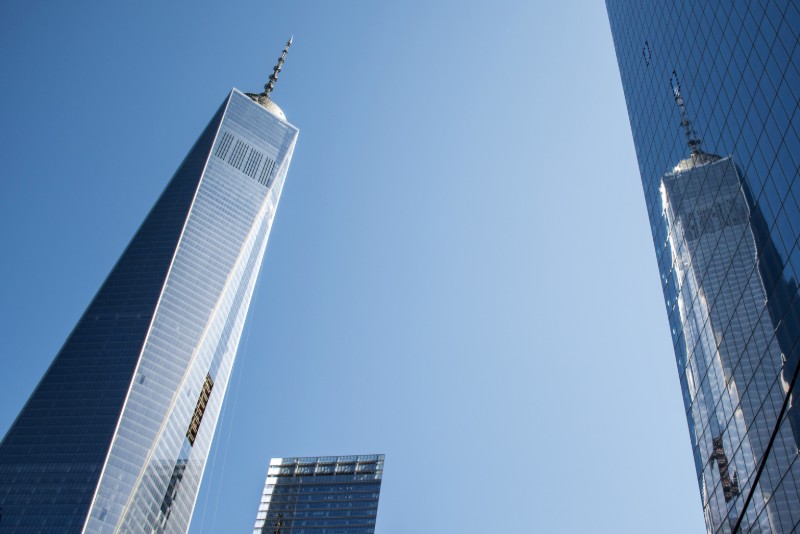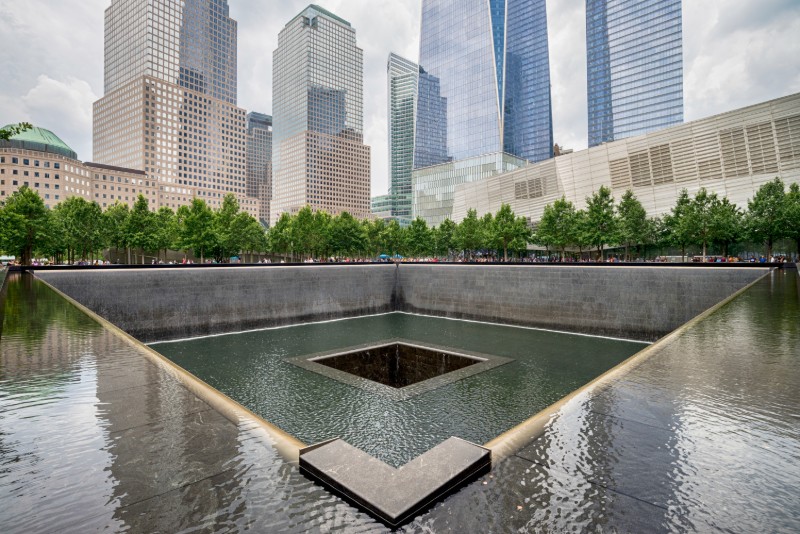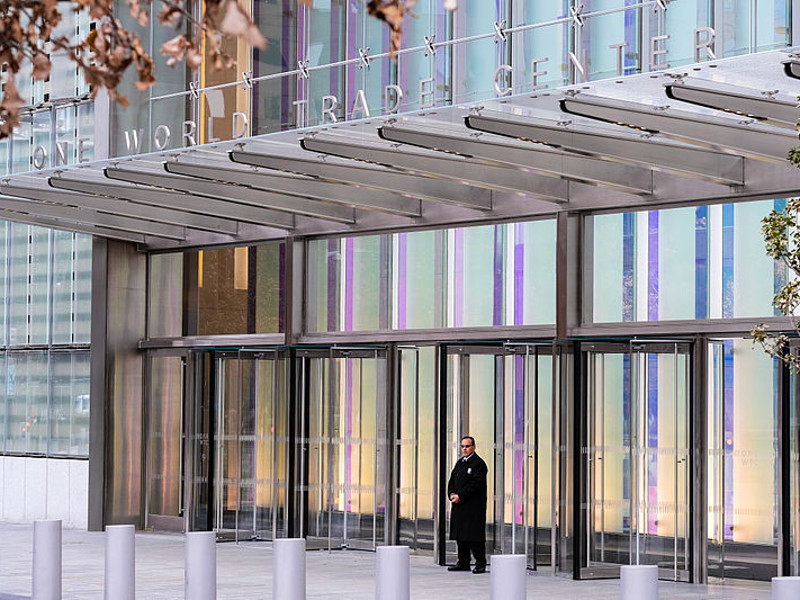One World Trade Center (1 World Trade Center – 1 WTC), built where the twin towers of the World Trade Center (WTC) once stood, opened for business in November 2014, more than 13 years after the 9/11 attacks.
Designed by Skidmore, Owings & Merrill (SOM) LLP, 1 World Trade Center is the tallest building in the western hemisphere. It achieved the LEED Gold certification in September 2016.
1 World Trade Center marks the rebirth of a major financial and commercial hub, re-establishing New York City as the epicentre of high-rise skyscraper design and serving as a symbol of the revitalisation in lower Manhattan.
The tower’s façade installation was completed up to the 71st floor by March 2012. The building reached 100 storeys in April 2012. The final two sections of the steel spire were installed by May 2013.
An awe-inspiring $610m National 9/11 memorial and museum was inaugurated in May 2014. The site accommodates four additional skyscrapers (Towers 2, 3, 4, and 7). Tower 7 was the first to open in May 2006. It was followed by towers 4 and 3, which were opened in November 2013 and June 2018.
The WTC amenities include a 16-acre campus consisting of trees and modern architecture. The campus houses multiple dining, entertainments and shopping options covering up to 450,000ft² area.
Project background
1 World Trade Center was originally named ‘Freedom Tower’ to demonstrate the US’s triumph over terrorism. In March 2009, the name was changed to One World Trade Center by the Port Authority of New York and New Jersey for easier identification. The centre’s role is similar to that of the old twin towers. The building contains 3.5 million square feet of space across 104 stories, of which 2.6 million square feet is office space. The 1 World Trade Center is built at the old tower 6 site.
At its base, street-level lobbies provide access to offices and public areas, in addition to the observation deck and restaurants near the top of the building. Below-grade concourses connect directly to 15 subway lines and to transit hubs for the Port Authority Trans-Hudson (PATH) commuter train service to New Jersey.
Although many people associate the design of 1 World Trade Center with architect Daniel Libeskind, his only responsibility is for the master plan of the WTC site. He determined the layout of the buildings, the location of the memorial and, in collaboration with the stakeholders and their architects, the distribution of the programme area. He also worked with SOM on a design that has since gone by the wayside.
He called for 1 World Trade Center to have a spire of 1,776ft (541m). The figure ‘1776’ represents the year that the founding fathers of the US signed the Declaration of Independence, asserting the country’s independence from the UK.
Changes to the original plans for New York’s 9/11 memorial
Beyond that, SOM is the primary firm behind the current 1 World Trade Center design. The company was also responsible for the twisted tower concept that preceded it. In that version, the glass-clad tower’s asymmetrical form would have alluded structurally to the nearby Statue of Liberty.In particular, the offset spire rising 400ft above the tower would have mirrored the statue’s raised Torch of Freedom.
However, that design was not adopted for both cost and safety reasons. Its glassy base had worried the New York City Police Department (NYPD). As part of the NYPD’s requirements, the revised design included a concrete protection wall around the lobby, prompting criticisms that the base would resemble a bunker.
The building concept, therefore, underwent significant revision. The goal was to simplify the design and enhance security while avoiding previous issues.
1 World Trade Center design and immense size
The new shape plays with geometry and perceptions. The base is a 200ft x 200ft (61m x 61m) square and the first 20 storeys rise straight up, aligned with this square. The design was revised twice in June 2005 and in June 2006 to cover the concrete base with a screen of glass prisms.
From the 20th floor up to a 1,368ft-high parapet, the edges chamfer back, creating eight triangular planes. The square rotates until the 102nd-floor square has turned 45° from the square on the 20th floor.
The eight, elongated, isosceles triangles form a neat configuration on the façade. These alternate between triangles with the apex on the 102nd floor and those with the apex at the 20th floor. The downward-facing triangles slope inward slightly, which is to say that the footprint of each floor shrinks slightly at higher points.
The parapet at the top of the topmost floor clearly marks elevations of both 1,362ft and 1,368ft. These represent the heights of the destroyed twin towers. A three-level One World Observatory deck is located in the 100-102 floors. Visitors can reach these heights via five high-speed elevators (just some of the building’s 54 elevators).
Above that level is the communications ring. This contains equipment for electronic news gathering, whip antennae and microwave relay dishes that television stations and businesses will use.
An illuminated 450ft tapered spire crowns the building and the entire WTC site. It also serves as an antenna providing digital broadcasting for the area (a function temporarily served by the Empire State Building). The top of the antenna also brings 1 World Trade Center up to the requisite 1,776ft height.
At the tip of the antenna, a brilliant, slowly rotating beacon flashes the letter ‘N’ in Morse code, as lightships once did in great harbours of the world. The ‘N’ stands for ‘New York’.
At 1,776ft, 1 World Trade Center is more than 400ft taller than the twin towers but not the world’s tallest structure. That distinction goes to the 2,717ft-tall Burj Khalifa, and SOM-designed tower in the UAE Burj Jumeira, which opened in 2010.
The building holds a 408ft spire, which sits on a concrete core at the top of the tower.
Materials used to build Manhattan’s 1 WTC
1 World Trade Center is clad in ultra-low-iron glass with stainless-steel for the corners. The stainless-steel harks back to the twin towers, where the corners catch the rays of the setting sun and glow at sunset.
In order that the building is not read as a bunker, the 20-storey base of 1 World Trade Center is encased in prismatic glass. As demonstrated in mock-ups, the prisms will refract and reflect light, trees and the sky by day, then shimmer at night.
On the west plaza of the tower, illuminated, stainless-steel steps serve as a gathering place, providing a gentle transition between the building and the plaza itself. This is an improvement over the twin towers, which had a much more abrupt transition.
The centre has been built using 48,000t of steel, along with 13,000 exterior glass panels.
Safety features of One World Trade Center
Given the controversy over the structural soundness of the twin towers, safety has been a key construction issue. 1 World Trade Center incorporates systems that far exceed the requirements of the city’s building code.
The building features structural redundancy and extra-strong fireproofing. The elevators are housed in a protected concrete building core. Moreover, the extra-wide, pressurised stairwells lead directly to outside streets and other stairwells are dedicated for use by fire-fighters.
Additional safety features include concrete-protected sprinklers, emergency risers and enhanced emergency communication cabling. The entire World Trade Center site is supported by a police command centre.
1 World Trade Center construction by Skidmore, Owings and Merrill (SOM)
The slow progress since the 2004 groundbreaking has provoked complaints and criticism. But SOM explains that they’ve faced complex challenges because the surrounding areas below grade contain tracks for PATH, a commuter train running from New York to New Jersey. Existing PATH structures must remain in place during the construction of 1 World Trade Center, which poses challenges.
SOM noted that because of the high construction costs in New York City, it’s not at all unusual for a foundation to go in while architects complete the design of a building.
Tishman Construction Corporation is the construction manager for the 1 World Trade Center project. The project uses low-energy HVAC solutions, high-performance façades, renewable energy sources, non-ozone-depleting chemicals, and recyclable and sustainable materials, including rainwater collection systems.
The tower’s first entrance, a street-level plaza on the eastern side, took shape in July 2009 with a concrete pour of approximately 1,250yd³.
The entrance above the street level forms the base of a large fountain on the plaza level and for planting swamp white oak trees. The section of the tower’s plaza was completed five storeys underground and core rises about 100ft above the ground.
A total of 22,000yd³ of concrete was poured at the site and nearly 700t of steel was installed for the tower’s substructure.
Transportation infrastructure surrounding New York’s 1 World Trade Center
The Port Authority of New York and New Jersey invested approximately $4bn for construction of a state-of-the-art railway station and associated structures at 1 World Trade Center. Designed by Spanish architect Santiago Calatrava, it consists of the World Trade Center Transportation Hub, shopping mall and pedestrian network. The facility was opened in 2016, replacing the old temporary PATH station.
A contract to fabricate, furnish and erect the World Trade Center Transportation Hub was awarded to DCM Erectors in March 2009. The $338.8m steel contract includes a transit hall, pedestrian links to the centre’s commercial complex and providing permanent support to Greenwich Street and the No. 1 subway box.






